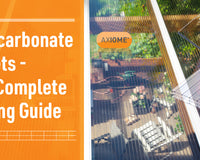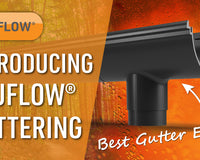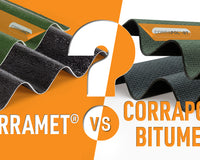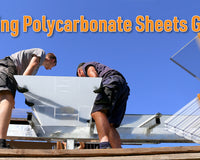Not all plastic mirrors are the same – some plastic mirrors break easily, some scratch, and some options give a distorted image. So, it’s important to understand what is the best plastic mirror.
Plastic mirror sheet is an alternative to glass mirrors. Firstly, they are cheaper. Secondly, they don’t break as easily as glass mirrors and are therefore safer, and lastly, they are around 50% lighter than glass mirrors.
But there is a problem with some plastic mirrors. In this article we explain the differences and what the best plastic mirrors are; There are 4 things you need to know…
4 Things You Need to Know About Plastic Mirrors:
- Not all Plastic Mirror Sheets are Unbreakable.
- Most Plastic Mirrors Scratch – Which ones Don’t?
- Don’t Look for Perfection – Look for Longevity.
- Thickness Matters – Weight versus Image Distortion.
Not all Plastic Mirror Sheets are Unbreakable.
Many people don’t realise that there are a lot of plastic mirrors that are made from plastic that will easily break. Yet some are incredibly strong and classed as unbreakable mirrors. This is because there are at least three types of sheet mirror made from different plastic types.
The problem is that all three are often sold as Shatterproof Mirror or Shatter Resistant Mirror which is confusing and strictly not true in most cases.
The following chart shows a comparison with glass mirrors compared to the three types of mirror sheets made from plastic and which two you should avoid.

As you can see polystyrene mirror breaks almost as easily as glass mirrors and so should be avoided. Polystyrene mirror is sometimes called ‘styrene mirror’ or just ‘plastic mirror’, so it’s worth checking which type of plastic mirror is being offered.
Acrylic Mirrors are stronger than glass or polystyrene mirrors but are still relatively weak, especially with impact in places like schools or public buildings. When plastic mirror breaks it can be dangerous creating sharp spikes and shards, so you don’t want to take that risk with using mirrored acrylic.
Using acrylic mirror sheets saves a bit of money initially but comes with risks and hidden costs that you will want to avoid.
However, Polycarbonate Mirror is 200 the impact strength of glass of the same thickness and is therefore classed as virtually unbreakable. This means that you don’t have the expense of breakages or the risk of shattered mirrors for your installation.
In public buildings, schools, colleges and gymnasiums, for example, it would be unwise to use anything other than a virtually unbreakable mirror.
Most Plastic Mirrors Scratch – Which ones don’t?
The main downside to any plastic mirrors is that they will scratch more easily than glass mirrors. However, where glass mirrors can’t be installed for safety reasons then you want a mirror that is both safe and scratches as little as possible.
The only way to reduce scratching on plastic is to add a scratch-resistant coating. This is a scratch-resistant coating for mirrors is a thin layer which is added to the surface and is very hard and resistant to scratches. So, this is another thing to check, whether it is a scratch-resistant plastic mirror.
One extra thing to note on this however, is that there are two types of scratching, and a scratch-resistant coating on mirrors will only protect against one of them.
Deep Scratches:
Deep scratches can be caused by a sharp object such as a knife or key for example. Even glass mirrors will be scratched by these types of scratches. Unfortunately, no scratch-resistant surface will protect against deep scratches.
Before installation, these types of scratches can occur on the back mirror-painted side of the mirror and show through to the front.
After installation, these types of scratches can occur on front of the mirror from accidental impact from sharp objects or deliberate acts of vandalism.

It’s important to note that these types of deep scratches can be caused by accidentally leaning a mirror against the corner of a nearby unit, worktop or table for example. Often people have inadvertently scratched mirrors with a knife unknowingly when unpacking and removing packaging. It’s very important therefore to ensure that the mirrors are unpacked carefully and never leant against corners or any sharp objects, or even dragged across other objects, or even another mirror.
Fine Hazy Scratches:
The other type of scratches are fine scratches that generally occur in a mass of tiny scratches that give an overall effect of a hazy or blurry effect.
It’s these types of hazy scratches that a scratch-resistant mirror coating will protect from.
On plastic mirrors, this hazy type of fine scratching can be caused by simple everyday actions such as cleaning the mirror. This shows the importance of ensuring you have a scratch-resistant surface on any plastic mirror you choose if you want to ensure you have a long-lasting mirror.
These fine scratches can be almost imperceptible and can build up over time. For example, if a mirror is cleaned every week, then the fine hazy type of scratches on week one would be hardly noticeable.
However, each week the layer upon layer of fine scratches will create this kind of blurring effect so that eventually the mirror becomes unsightly and unusable and ultimately must be replaced.

That’s why choosing a scratch-resistant and unbreakable mirror gives you a double advantage and will give you the best longevity. After all, you don’t want to spend your money twice.
Don’t Look for Perfection – Look for Longevity.
When manufacturing the best plastic mirrors, there are several layers. There’s the plastic at the core, and then on the back, there’s a layer of mirror, which is then covered in a further layer of paint for initial protection. Then on the front, you have a scratch-resistant surface layer.
Any slightest imperfection in any mirror is far more noticeable as the mirror reflects even the tiniest blemish.
During the various stages of manufacturing plastic mirrors with a scratch-resistant surface, tiny speckles and indents the size of a pin head can appear. After all, we are dealing with layer after layer of molten surfaces and even in a cleanroom these small imperfections can appear which are then made more obvious in a mirror.
However, these small imperfections are a natural phenomenon that from any reasonable distance of say two to three metres will not be noticed.
In applications where you can’t use glass mirrors, it’s far more important to ensure you have a mirror that is virtually unbreakable and will retain a good reflection avoiding the blurring hazy type of scratches. We’re sure you’ll agree that these minor imperfections are a reasonable compromise.
So don’t look for perfection in any plastic mirror…. What you need is longevity and protection against breakage and hazy scratching preventing visibility.
Thickness Matters – Weight versus Image Distortion.
Obviously the thinner the mirror, the lower the cost will be as there is less plastic in the core of the plastic mirror. However, there are two other factors that you will want to consider as they also play equally important factors in making the right decision.
The thicker the plastic mirror the heavier the mirror will be. This is important to bear in mind if you are fixing to lightweight structures or where you are limited by the type of fixings you can use.
For smaller mirrors, there are advantages in going for a thinner mirror such as 3mm plastic mirror thickness.
But hold on… there’s one extra very important point…
Thinner plastic mirror sheets will bend easier, but in mirrors this causes the reflection to be distorted. What’s also important to know is that it doesn’t take much bending to create a very significant distortion in the reflection.
Choosing a thicker mirror such as a 6mm plastic mirror will help reduce the risk of it bending so easily and make it easier to get a good reflection.
It’s also important to make sure that the surface of the wall you are fixing to is perfectly flat. Even slight undulations in the wall can cause the mirror to bend which again causes distortions to appear.
The light reflecting from a perfectly flat mirror reflects directly giving a normal reflection as shown below. However, the Reflection in Convex and Concave Curved Plastic Mirrors returns at a tangent which gives a distorted reflection.
Even the slightest undulation on the mirror will cause these tangents to make the reflection slightly distorted. Obviously the greater the undulation the greater the distortion will be.
The diagram below shows the effect of a mirror installed where the surface is flat compared to one where the surface is not perfectly flat.

When talking about distortion in mirrors it’s worth noting that it is also dependent on the distance between the mirror and the viewers using the mirror. The nearer the viewer is to the mirror the less the distortion will be, whereas if the viewer is at a bigger distance any distortion will look worse.
With this in mind, more care will be needed when installing plastic mirrors for areas where the reflection is intended for greater distances.
For example, gymnasiums or equestrian centres where the reflection may be needed over several metres will be more challenging to avoid distortion. On the other hand smaller restrooms, toilets, kitchens, bedrooms etc where the view is only half a metre away from the mirror when viewing will have a much more perfect reflection.
Essentially a thicker mirror will make it much easier to achieve the best possible reflection. Fixing the mirror to a perfectly flat wall or backing board will further improve the chances of a good reflection.
Conclusion:
It’s important to remember that the reason we choose to install plastic mirrors is mostly due to the safety concerns of glass mirrors.
We all know that plastic mirrors of any kind are only 85% as good as glass mirrors for reflection quality, but the two most important factors for the best plastic mirrors are to make sure that they are made from virtually unbreakable plastic and then to ensure that they have a scratch-resistant surface coating.
Making sure of these two points will give you a great mirror solution in what we believe is the best plastic mirror and will last a long time. Then the rest is about choosing the right thickness to suit your needs and installing it as flat as possible for the best reflection.
Need more help? – Why not live chat with our super-friendly team who have expert knowledge and can support you with every stage of your project and requirements.












